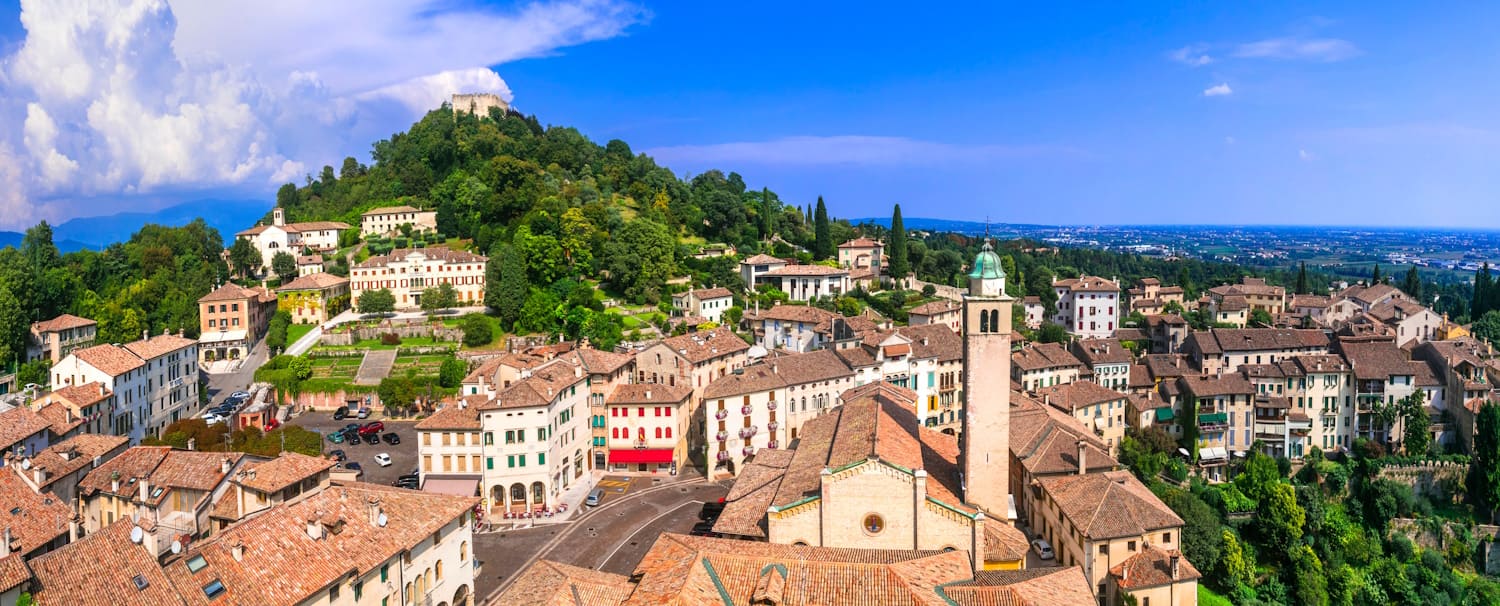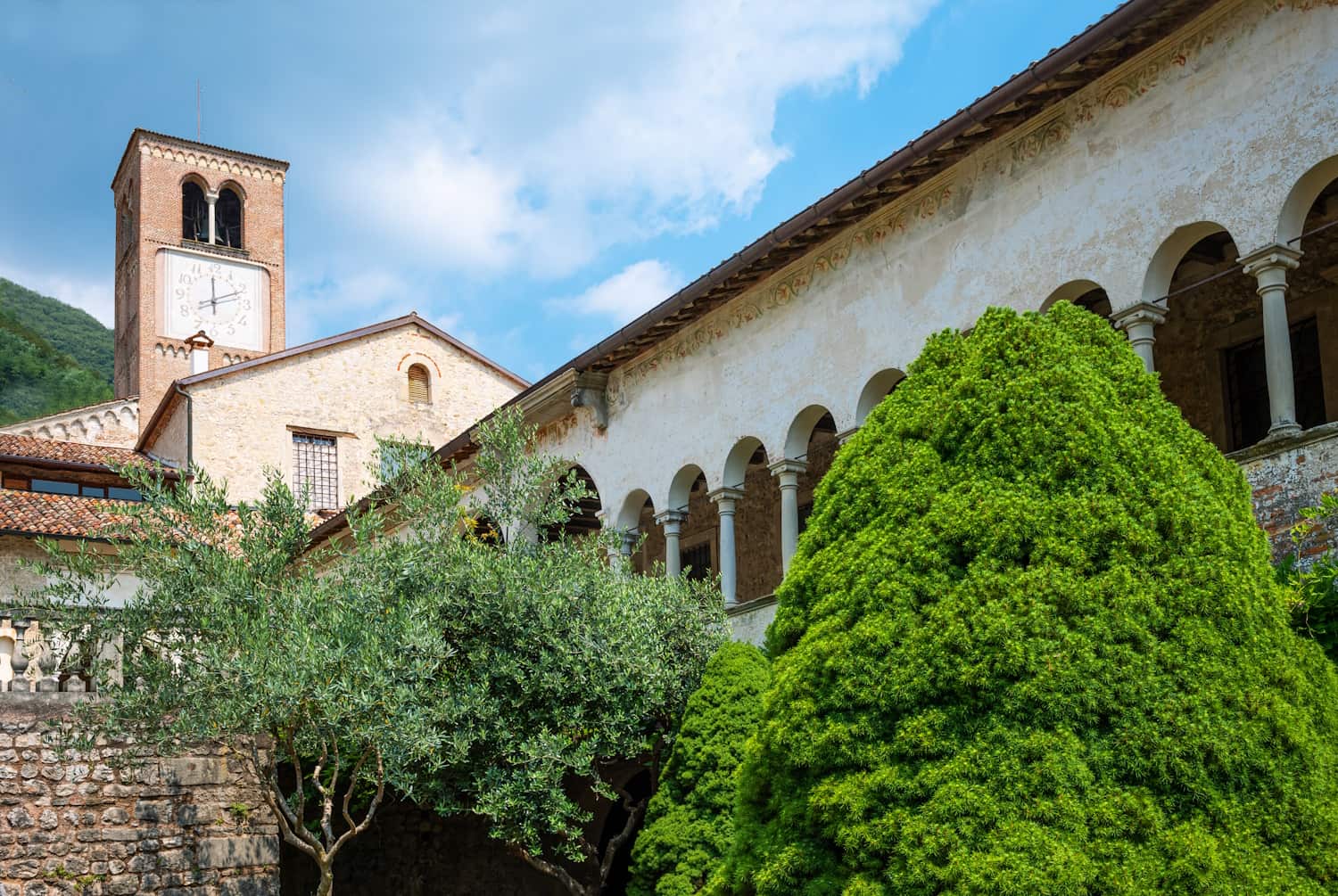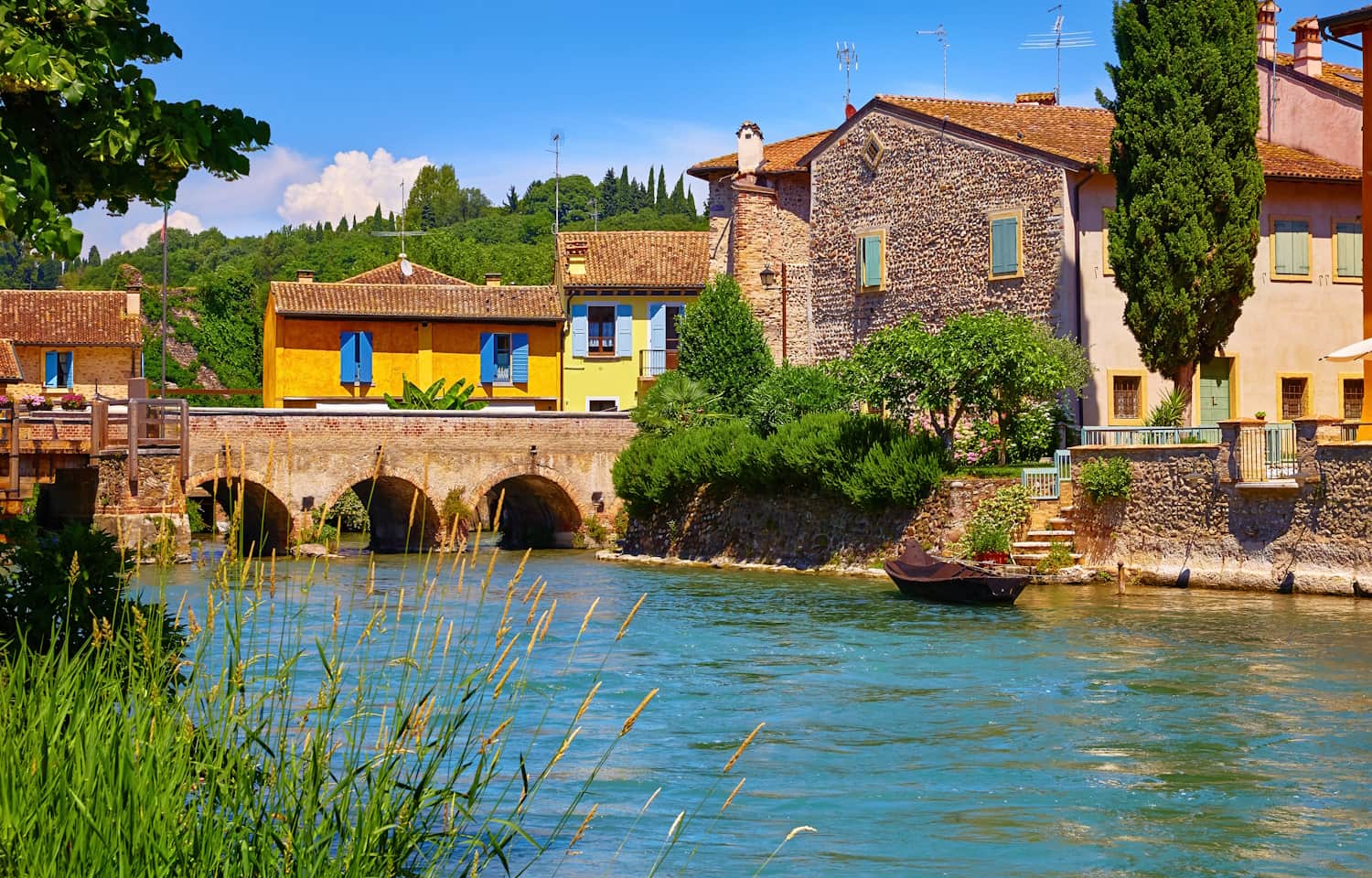
©Bigstock.com/Maugli-l
The Veneto region is home to some of Italy’s largest cities, is highly populous and more than just a tourist hub. At the same there, there are plenty of smaller, lesser known gems that managed to retain most of their naturalness, that whisk you away to days long gone, that capture the magically alluring gist of the Italian north at the same time. The private association “I borghi più belli d’Italia” has made it its business to give these small treasures a platform. Four of the most beautiful places in Italy await you in the Province of Treviso, another two in the Province of Verona – the ideal way to experience a slightly different Veneto.
Province of Treviso
Originally populated by the Celts, the Province of Treviso is very flat with a few hills in the north. You can find plenty of winegrowing areas here, some of which are home to the geographically protected sparkling wine prosecco and were declared UNESCO World Heritage Site. Additionally, you get to enjoy four particularly beautiful places combining viniculture with fascinating history.
Asolo
Asolo Prosecco is among the finest wines of the classic Prosecco region. The hilly scenery of this municipality (approx. 8,900 inhabitants) lends itself to growing various kinds of wine. The first settlers came here in pre-Christian times. You can even see ruins of the later Roman town Acelum, e.g. in Villa Freya. Furthermore, there are plenty of amazing buildings, such as the imposing Cathedral Santa Maria Assunta, its current appearance dating back to the 16th century, or the Villa Scotti-Pasini with its hanging garden. 276 steps lead you to the medieval Rocca, enthroned high above the village on the summit of Monte Ricco since the 13th century.
Cison di Valmarino
Find another bastion of Prosecco growing in Cison di Valmarino (approx. 2,400 inhabitants), first populated during the Stone Age. Situated on an important transportation route across the Alps in Roman times, it later became a defensive stronghold against barbaric attacks during the European Migration Period. Stunning forests and nature sanctuaries highlight the scenic beauty. However, a hotel serves as the de facto landmark of this place. Castle Castelbrando, originally a medieval fortification, was turned into a stately manor with a Renaissance wing in later times by the Brandolini family before becoming a tourist accommodation. The magnificent 18th century church Santa Maria Assunta houses a remarkable altar and enchanting paintings. Don’t miss out on a walk through the districts Tovena and Mura with their old rock buildings.

©Bigstock.com/Gimas
Follina
Originally situated on the major Roman road Via Claudia Augusta across the Alps, Follina (approx. 3,500 inhabitants) now is another important place of Prosecco growing, stretching across hilly scenery with divine views. You must visit the 12th century Cistercian abbey Santa Maria Sanavalle di Follina. The Romanesque cloister and the later added baroque details and works of art will wow you. Other smaller churches accompany your walk through the village, such as the late Gothic Chiesa di San Clemente or the mostly decayed Chiesa di San Tomio, its works of art and interior long stolen, sadly with very few exceptions. The watermill Lanificio Paoletti, however, is known beyond the region for its wool production. Countless renowned fashion brands use the high-quality commodities for their lines.
Portobuffolé
Portobuffolé (approx. 740 inhabitants) knew many different rulers over the course of its history, and they all left their mark. One of the key buildings is the monumental cathedral finished during the mid-16th century, hiding several treasure behind the comparatively simple façade with its clear use of forms. Numerous paintings line the tall ceiling. The two side altars were artistically adorned as well. Portobuffolé is also the home of magnificent villas, such as Casa Gaia. Impressive façade decorations and charming frescoes make this a must-visit building. 10th century Torre Comunale is the only tower left of the seven that used to dictate the panorama.
Province of Verona
Verona isn’t just one of Italy’s most popular tourist destinations, the World Heritage city is also home to several magical, fascinating sights. The eponymous province combines the urban core and equally alluring cultural landscapes with numerous castles, small towns and monasteries as well as the charmingly hilly nature in the north. The two most beautiful places in the Province of Verona are just as magical.

©Bigstock.com/yasonya
Borghetto
This district of Valeggio sul Mincio with a population of about 400 used to be a fishing village situated on both sides of the river Mincio. These days, the idyllic beauty below the Visconti bridge attracts numerous tourists who don’t just want to enjoy the neat view from the wooden bridge. The castle with its rather unusual 12th century tower on a hill over the village certainly is a worthwhile stop. You will certainly be enchanted by Chiesa di San Marco Evangelista with its neoclassical elements creating awe-inspiring harmony with the Romanesque roots and stunningly beautiful 14th century frescoes.
San Giorgio
San Giorgio (approx. 350 inhabitants), actually part of the municipality Sant’Ambrogio di Valpolicella, is near Lake Garda. You will be welcomed by the tremendous parish church, likely based on a 7th century Lombard place of worship. Some structures date back to this period, like the western façade and the ciborium. The current Pieve di San Giorgio di Valpolicella, however, is of 11th century origin and known for its numerous frescoes, such as the elaborately restored 14th to 15th century Last Supper. The adjacent museum welcomes you with finds from the long settlement history, prehistoric and Roman. Don’t pass on a walk across the magnificently terraced hills!
From winegrowing to monumental churches to charming narrow alleys: the most beautiful places in the provinces of Treviso and Verona live and breathe the spirit of days long gone. Standing on wine terraces, your gaze lingers on the small village centres, ostentatious castles and diverse nature with its enchanting hiking and biking trails leading you from village to the village. A slightly different Veneto already awaits you!